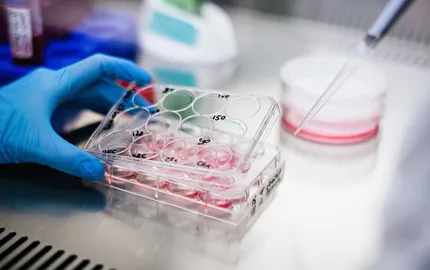Presentation

Our goal is to identify genetic and epigenetic events involved in tumor progression and new therapeutic targets. We focus on two carcinomas, bladder and breast cancer, and on retinoblastoma, a pediatric cancer of the retina. We use bioinformatics, based on large-scale transcriptomic, genomic and sequencing data, to identify genes and pathways potentially involved in tumor progression. We then validate candidates experimentally in both cell lines and animal models (xenografts, transgenic mice and/or chemically induced mouse models). Although our work is primarily focused on the understanding of human cancers, the results obtained can be the basis of new treatments, new diagnostic and prognostic markers.
Our work on bladder cancer started many years ago and is based on a strong collaboration with different hospitals in France through a National multidisciplinary program (COBLAnCE project) coordinated by S. Benhamou (CEPH-INSERM). Uropathologists, coordinated by Y. Allory (Henri Mondor hospital), and urologists, coordinated by T. Lebret (Foch hospital), are involved in this program. Bladder cancer is the fifth most common cancer. The only treatment currently available for muscle invasive bladder carcinoma is cystectomy and, despite this treatment, it remains a deadly disease. The identification of new genes and/or signalling pathways involved in bladder tumor progression is therefore of major importance. We identified several kinases (FGFR3, TYRO3, P38a) involved in bladder cancer as well as in other tumour types. Their involvement has been confirmed by functional studies in cell lines and in various animal models. A program for leads identification targeting TYRO3 has been started in collaboration with chemists and structural biologists (Institut Curie, CNRS, INSERM). We identified CDKN2A loss as a key genetic event in the progression of FGFR3-mutated bladder cancer (which represent 50% of bladder cancer patients at first diagnosis). This finding led to the identification of CDKN2A loss as a prognostic marker in FGFR3-mutated bladder cancer patients (Rebouissou et al., 2012).
We recently identified and characterized different subgroups of muscle-invasive bladder tumors and identified therapeutic targets for these subgroups (EGFR, PPARG) which have been validated in preclinical models (Biton et al., 2014; Rebouissou et al., 2014).
We also identified a new epigenetic mechanism for gene inactivation, which involves the silencing of whole chromosomal regions by histone modification. Tumours which exhibit this phenotype are particularly sensitive to histone deacetylase inhibitors (Stransky et al., 2006; Vallot et al., 2011; 2014).
We have more recently begun work on breast cancer and retinoblastoma studies, in collaboration with clinicians and biologists. We identified several oncogenes in breast cancer including two new oncogenes, PPAPDC1B and WHSC1L1, which are overexpressed through amplification of the region 8p12. PPAPDC1B is a phosphatase, and thus could be a potential therapeutic target. These genes are likely to be involved in other cancer types like lung and pancreas (Bernard-Pierrot et al., 2008; Mahmood et al. 2013; 2014).






















